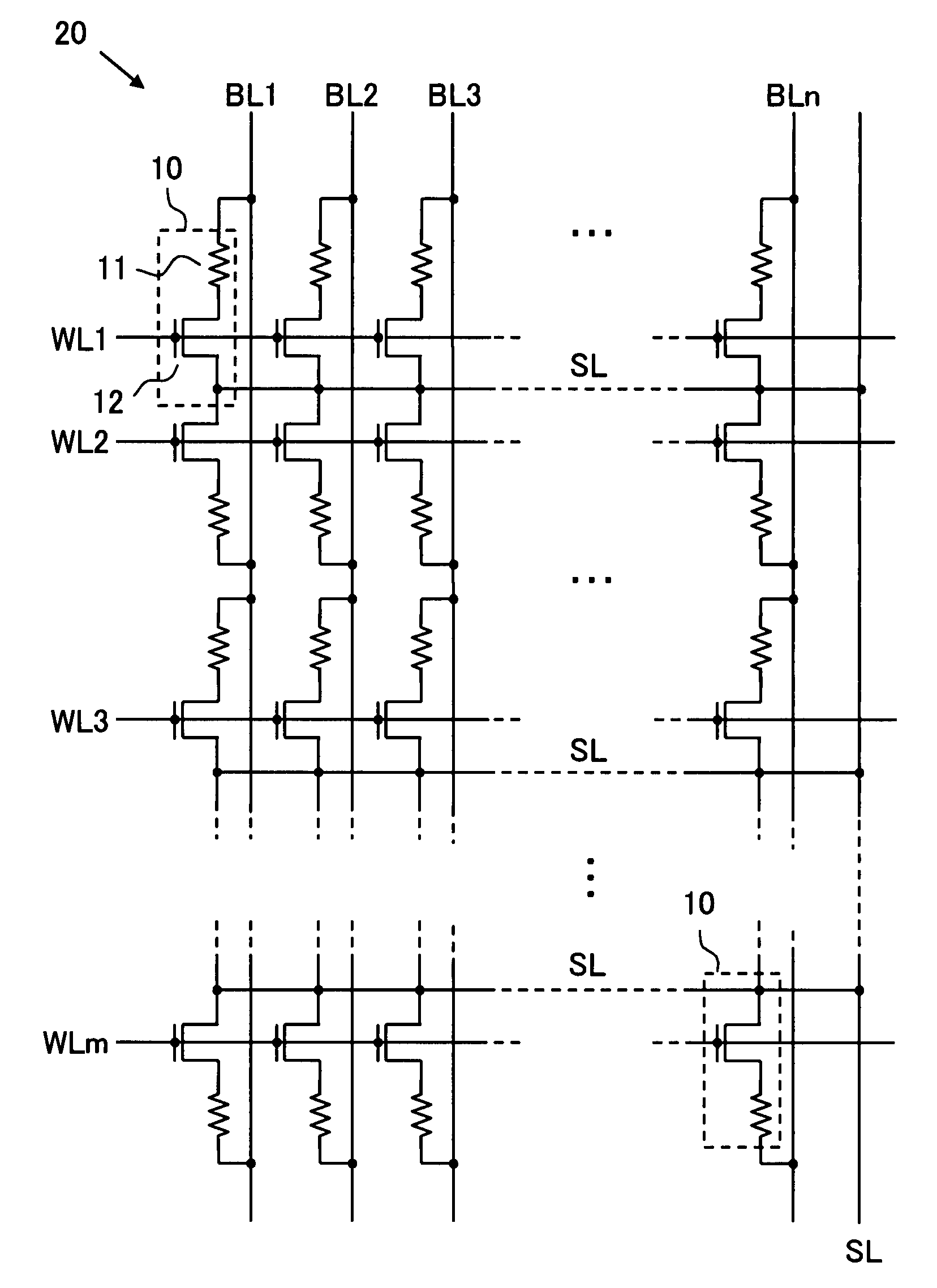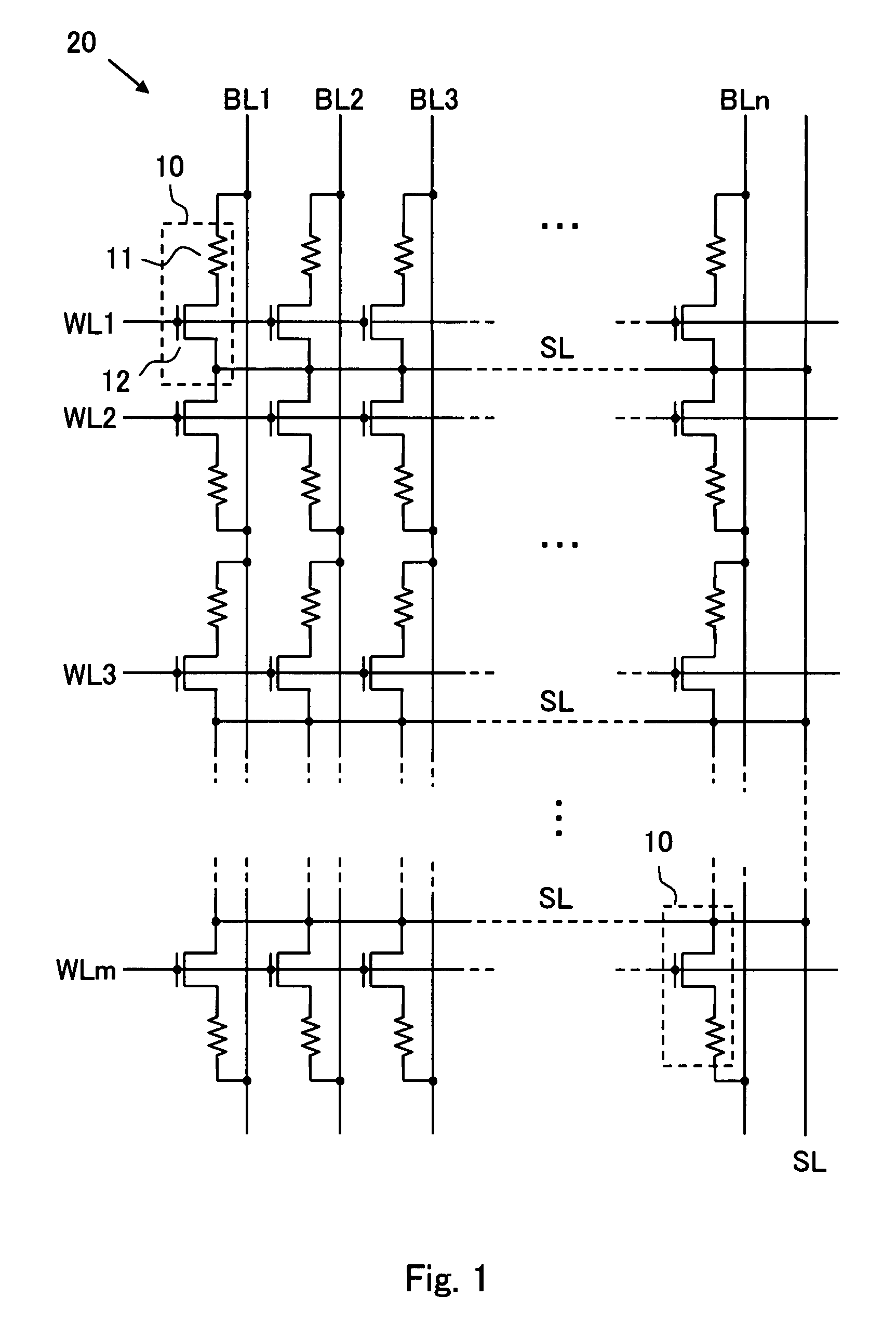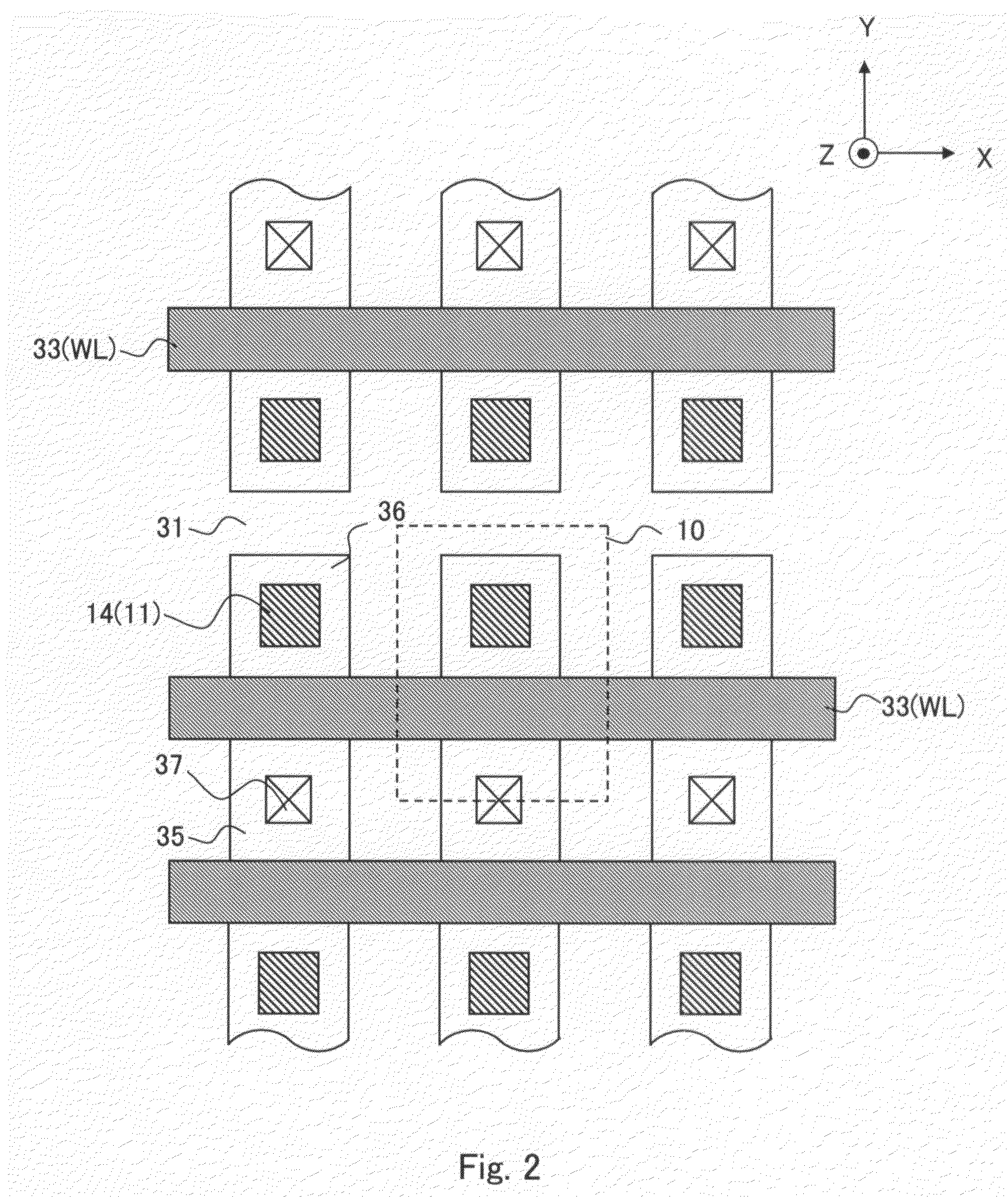Semiconductor memory device
a memory device and semiconductor technology, applied in the field of semiconductor memory devices, can solve the problems of failure to eliminate the probability of information loss, failure to avoid the loss of information stored in the selected memory cell, and the reliability of data storage will be declined, so as to achieve the effect of reducing production costs and simplifying the semiconductor memory devi
- Summary
- Abstract
- Description
- Claims
- Application Information
AI Technical Summary
Benefits of technology
Problems solved by technology
Method used
Image
Examples
first embodiment
[0054]The inventive device of this embodiment comprises, as shown in FIG. 1, one or more memory cell arrays 20 where a number of memory cells 10 are arranged in rows and columns and groups of words lines WL1 to WLm and bit lines BL1 to BLn arranged to extend along the rows and the columns respectively for selectively driving one or more of the memory cells of interest while a group of source lines SL is arranged to extend along the rows. Although the source lines SL extend along the rows in parallel to the word lines WL1 to WLm, each source line in each row, and are connected commonly at the outside of the memory cell array 20 in the embodiment shown in FIG. 1, they may be modified to one source line SL provided commonly for two adjacent word lines or may extend along the columns but not the rows. Alternatively, each memory cell array 20 may be accompanied with two or more of the source lines SL for selectively driving one or more of the memory cells of interest in cooperation with ...
second embodiment
[0090]The second embodiment of the present invention will be described. The inventive device of the second embodiment comprises, as shown in FIG. 13, one or more memory cell arrays 40 where a number of memory cells 16 are arranged in rows and columns and groups of words lines WL1 to WLm and bit lines BL1 to BLn arranged to extend along the rows and the columns respectively for selectively driving one or more of the memory cells of interest while a group of source lines SL is arranged to extend along the rows. Although the source lines SL extend along the rows in parallel to the word lines WL1 to WLm, each source line in each row, and are connected commonly at the outside of the memory cell array 40 in the embodiment shown in FIG. 13, they may be modified to one source line SL provided commonly for two adjacent word lines or may extend along the columns but not the rows. Alternatively, each memory cell array 40 may be accompanied with two or more of the source lines SL for selectivel...
PUM
 Login to View More
Login to View More Abstract
Description
Claims
Application Information
 Login to View More
Login to View More - R&D
- Intellectual Property
- Life Sciences
- Materials
- Tech Scout
- Unparalleled Data Quality
- Higher Quality Content
- 60% Fewer Hallucinations
Browse by: Latest US Patents, China's latest patents, Technical Efficacy Thesaurus, Application Domain, Technology Topic, Popular Technical Reports.
© 2025 PatSnap. All rights reserved.Legal|Privacy policy|Modern Slavery Act Transparency Statement|Sitemap|About US| Contact US: help@patsnap.com



